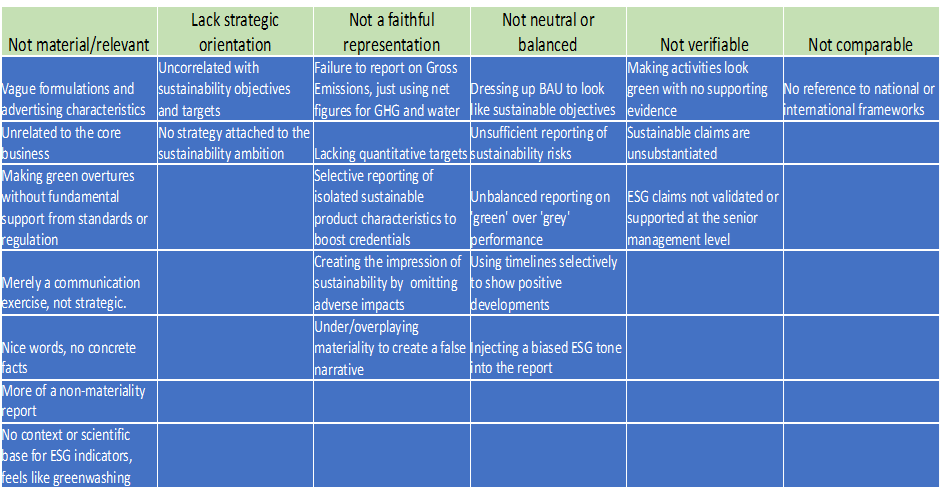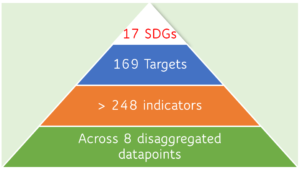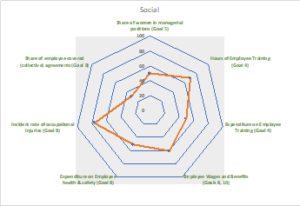In recent years, sustainability reporting has undergone a significant transformation, evolving into a powerful tool that drives positive change. This growing trend is reshaping the way businesses measure and communicate their environmental, social, and governance (ESG) performance.
Gone are the days when sustainability reporting was merely a box-ticking exercise. Today, it has become a crucial aspect of corporate strategy, demonstrating a company’s commitment to sustainability and its contribution to building a better world. From reducing carbon emissions to promoting diversity and inclusion, sustainability reporting captures the holistic impact of businesses on society and the environment.
This enhanced focus on sustainability reporting stems from an increasing demand for transparency and accountability from stakeholders, including investors, customers, employees, and regulators. It allows them to make informed decisions, align their values with the companies they engage with, and reward businesses that prioritize sustainability.
As sustainability reporting continues to mature, forward-thinking organizations are taking advantage of advancements in technology and data management to streamline the process. Automated reporting tools, data analytics, and real-time monitoring enable companies to track their ESG performance more effectively, identify areas for improvement, and set meaningful goals.
Moreover, sustainability reporting is no longer limited to large corporations. Small and medium-sized enterprises (SMEs) are recognizing the benefits of measuring and disclosing their sustainability efforts. By doing so, they gain a competitive edge, attract like-minded investors, and strengthen their brand reputation.
The future of sustainability reporting looks bright, as it becomes an integral part of a company’s DNA, influencing decision-making, shaping corporate culture, and driving innovation. As businesses embrace the potential of sustainability reporting, they pave the way toward a more sustainable and prosperous future for all.
Do you recognise any of these observations?

Feedback from frustrated commercial and retail users of corporate sustainability reports, shared with EFRAGs PTF-RNFRO, reveals a common complaint. Companies that provide these reports often prioritize showcasing their positive image rather than providing meaningful information about their industry-specific ESG responsibilities, risks, and opportunities. These reports are often filled with colorful visuals and vague promises, giving the impression of an advertisement rather than a useful resource for stakeholders and investors. Using lofty language and making grand commitments to their value-chain’s wellbeing can only go so far in earning credibility. EFRAGs PTF-RNFRO*
The Data Case Study: UN SDGs
The practice of trying to fit unsubstantiated corporate activities into the United Nations Sustainable Development Goals (SDGs) is becoming annoying. It comes across as desperate and, even worse, misleading. This behavior is starting to catch the attention of experts who are on the lookout for stories of greenwashing. However, the 17 SDG goals that companies proudly align with are only part of the picture. There are actually 169 targets, 248 indicators (and counting), and 8 different breakdowns based on race, age, geography, gender, and more. If used correctly, this wealth of information can provide valuable insights.
 The key to sustainable success lies in the details. When a company aims to align itself with specific goals, it’s crucial that the users of their report understand how management is setting targets, measuring performance, and working towards meeting the 2030 deadline. Find out how we are committed to transparently sharing our progress towards achieving these goals.
The key to sustainable success lies in the details. When a company aims to align itself with specific goals, it’s crucial that the users of their report understand how management is setting targets, measuring performance, and working towards meeting the 2030 deadline. Find out how we are committed to transparently sharing our progress towards achieving these goals.
The rise of accountable materiality:
Looking to increase your value in sustainable reporting? Don’t underestimate the power of ESG data. With a shortage of this valuable information, a simple visual aid can take you to the next level. Just make sure it can be monitored and compared to a recognized framework or standard.
A different audience:
In today’s fast-paced world, sustainability reports are no longer just read by a handful of experts. Professionals from various fields, who are accustomed to analysing financial statements, are now delving into these reports. However, they lack the luxury of time and patience, and certainly don’t want to sift through pages of vague information.
To capture their attention and gain their trust, your report needs to be concise and clear. It should offer a quick assessment of your corporate, climate, and social responsibilities, both in the present and long-term. Furthermore, it needs to demonstrate how your board takes responsibility for achieving these goals – right from the top.
By presenting your sustainability efforts in a structured and accessible manner, you can effectively showcase your commitment to a better future. Suitably crafted reports will not only grab the attention of these professionals but also earn their respect and trust.
The UN Global Core Indicators (GCIs) – here to help:
The UN is seeking the support of businesses to achieve climate, social, and economic goals by 2030. To facilitate this, the UN’s department for Trade and Development (UNCTAD) has provided a set of SDG core indicators that can be used by companies of all sizes, including SMEs. These indicators can help companies align their efforts and measure their performance in relation to the SDGs. By adopting these indicators and setting realistic targets, companies can contribute to the quantifiable progress and success of the SDGs.
 At the Disruption House we use the UN SDG GCIs as part of our corporate ESG advisory platform, leveraging our assessments to help businesses map their sustainable goals to real SDG targets, helping you to help the users of your reports, and hopefully allowing the sleep deprived analysts a few more minutes of shut-eye….you see, you’re already improving your S score!
At the Disruption House we use the UN SDG GCIs as part of our corporate ESG advisory platform, leveraging our assessments to help businesses map their sustainable goals to real SDG targets, helping you to help the users of your reports, and hopefully allowing the sleep deprived analysts a few more minutes of shut-eye….you see, you’re already improving your S score!
Contact us to learn more about sustainability reporting.

